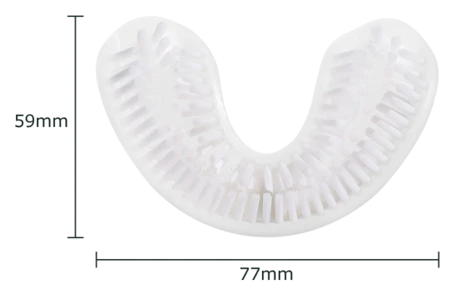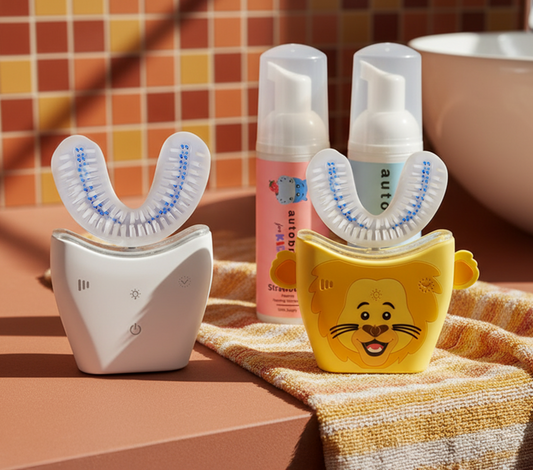
Which is the Best Toothbrush: Automatic or Electric?
When it comes to brushing your teeth, you don’t ask for much from your toothbrush. As long as it effectively removes plaque and gets the gunk out from in between your teeth, it does its job.
But which toothbrush maintains your smile best: electric or automatic?
From whitening your teeth to getting a deeper clean, you can achieve varying results depending on which toothbrush you choose.
In this blog, I’ll address the pros and cons of electric toothbrushes and automatic toothbrushes and which is the best fit for your needs.
What is an electric toothbrush?
First things first, there are two types of electric toothbrushes.
- Vibrating toothbrushes (the whole brush shakes)
- Oscillating toothbrushes (the bristles move side-to-side)
Oscillating electric toothbrushes are much more effective at removing plaque from your teeth. So much so, we do not recommend vibrating electric toothbrushes.
The rest of this article will solely focus on oscillating toothbrushes.
What are the pros and cons of an oscillating electric toothbrush?

They’re easier to use than manual toothbrushes. Rather than having to use physical strength and dexterity to clean each tooth, you only have to move the brush around all your teeth. Oscillating bristles do the actual cleaning part for you.
Electric toothbrushes are also more effective than manual toothbrushes at removing plaque and tartar.
But this all comes at a higher cost —at least, initially.
Once you’ve purchased the brush’s introductory set, it’s recommended that you buy a new brush head every 3 months. Brush heads are usually only slightly more expensive than replacing your manual toothbrush.
Electric toothbrushes are also, you know, electric. Which means they have to be plugged in and charged. However, every electric toothbrush comes with its own charging station, most of which are very easy to use.
What is an automatic toothbrush?

If you’re new to AutoBrush or automatic toothbrushes in general, let’s go over the basics.
The AutoBrush looks a little like a mouthguard with a handle. To begin brushing, you insert the mouth guard over your teeth, turn it on, and select your brushing mode: care, deep clean, or massage. Then, the AutoBrush uses ultrasonic technology and the ADA-approved “BASS Technique” to brush all your teeth at once.
It’s easy to understand when you see it, so here’s a quick video of the AutoBrush in action:
As you can see, this type of brush is quite a bit different from those you may be familiar with.
What are the pros and cons of a brush like the AutoBrush?

Like an electric toothbrush, it involves a higher up-front cost and needs to be kept charged.
But the brushing experience with an automatic toothbrush is by far more convenient since there’s no real “technique” involved. You don’t have to worry about moving the brush from tooth to tooth, missing a spot, or even applying too much pressure. Automatic toothbrushes take care of all the nitty gritty details like that for you.
All you have to do is gently bite down on the u-shaped mouthpiece and move it back and forth and up and down for 60 seconds. And, voila! You have a full-mouth clean.
The AutoBrush also has other features that you can’t find on any other toothbrush.
These features include:
👉 3 LED light therapies: Blue, red, and purple
👉 3 timer modes
👉 & kid friendly touches like animal shapes and music
The Bottom Line
Both electric toothbrushes and automatic toothbrushes can offer an efficient cleaning experience. However, automatic toothbrushes take the guesswork out of brushing for an optimal clean, every time.
The AutoBrush is also better suited for all individuals including children, those living with disabilities, and seniors that may have limited mobility.
Our suggestion? Give AutoBrush a go!
What to Read Next:
👉 Common Mistakes in Brushing Teeth
👉 The History of the Toothbrush
Stay Fresh On Latest in Dental:
Subscribe to our blog by entering your email address below. 👇












